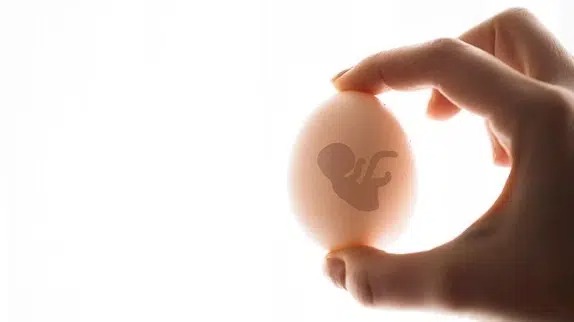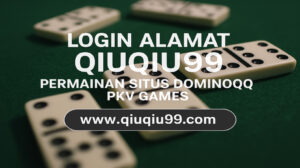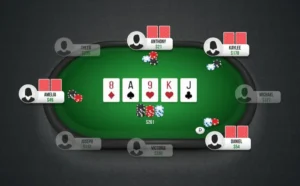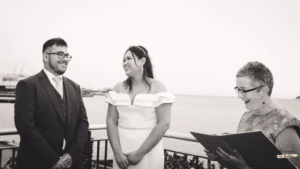Unwinding the Knots: How Tension Affects Your Life and How to Let Go
Tension is an intricate and multifaceted force that shapes much of the human experience. It is the invisible thread woven through our thoughts, feelings, and actions, constantly pulling and pushing us between extremes. Whether in personal relationships, creative endeavors, or even within our own minds, tension plays a central role in defining the emotional landscape of our lives. When approached consciously, tension can become an art form—an intentional, skillful dance of forces that both challenge and transform us.
In the realms of art, literature, music, and psychology, tension is often regarded as a necessary ingredient for depth and meaning. Without it, stories would be predictable, compositions would be flat, and human interactions would lack the complexity that makes them interesting and relatable. The careful balance of tension—where opposing forces meet and interact—creates dynamic, evolving landscapes that reflect the complexities of human emotion.
The Nature of Tension
Tension arises from a fundamental duality that permeates our experiences. It is the conflict between desires and constraints, between the self and the world, between what is and what could be. At its core, tension is the feeling of being pulled in multiple directions, caught between conflicting needs, aspirations, and values. It can be both an external phenomenon, shaped by circumstances and relationships, and an internal one, shaped by our own psychology.
Psychologically, tension is closely related to stress, conflict, and desire. We experience it when our expectations collide with reality, when we confront obstacles in our path, or when we feel pulled between competing goals. On an emotional level, tension often manifests as anxiety, uncertainty, or a sense of anticipation. While it can be uncomfortable, tension is also a catalyst for change and growth, a reminder that life is in constant flux.
In creative and artistic fields, tension takes on a more formalized role, often used as a tool to engage the audience, evoke emotional responses, and communicate deeper truths about the human condition. Artists, writers, musicians, and filmmakers all understand that tension is not simply something to be avoided or resolved. Rather, it is something to be embraced, shaped, and explored.
Tension in Art and Literature
In storytelling, tension is one of the fundamental components that drives a narrative forward. Conflict between characters, inner turmoil, or tension between desires and outcomes creates suspense, a vital element in keeping the audience engaged. Think of the classic dramatic structure, where tension builds toward a climax and eventual resolution. Without this rising action, a story would lack momentum and significance.
In literature, authors often use tension to deepen character development and to explore complex emotional states. The inner conflict of a character torn between love and duty, or between personal desires and social expectations, adds depth to the narrative. Great writers use tension to expose the vulnerability of their characters, allowing readers to identify with their struggles and, in turn, to reflect on their own.
Take, for example, the works of William Shakespeare. In plays like Macbeth, Hamlet, and Romeo and Juliet, the tension between characters’ actions and their underlying motivations is what fuels the drama. The characters are often in a state of emotional turmoil, torn between their desires and their circumstances, and this internal conflict mirrors the external conflicts they face. The result is a story that feels alive and unpredictable, as the audience waits to see how the tension will resolve—or whether it will.
Similarly, modern writers continue to exploit tension in their works to create compelling narratives. In thrillers, the constant pushing and pulling of danger and safety keeps readers on edge. In literary fiction, the quiet tensions of everyday life can be just as powerful, as characters navigate the complexities of their own emotional landscapes. The key to great storytelling, whether in novels or short stories, is the skillful management of tension—keeping it taut, and then, when the time is right, releasing it to create resolution, catharsis, or insight.
Tension in Music
Music, too, is a language of tension and release. A piece of music is often structured around the ebb and flow of tension, as composers manipulate harmony, rhythm, and dynamics to guide the listener through an emotional journey. The tension in music arises from dissonance—the sense of instability or conflict between notes or chords—which is then resolved into consonance, creating a sense of peace or closure.
Classical music, especially that of composers like Beethoven, Mozart, and Bach, is rife with moments of tension. Beethoven’s Fifth Symphony, for example, opens with the iconic four-note motif—”da-da-da-daah”—a pattern that is repeated and developed throughout the piece. This motif builds an intense sense of expectation and urgency, creating a tension that drives the movement forward. When the resolution finally arrives, it is both powerful and satisfying.
Jazz is another genre where tension plays a critical role. The improvisational nature of jazz allows musicians to explore dissonance and unconventional harmonies, creating moments of suspense that keep the listener on edge. The tension in jazz often lies in the unpredictable nature of the music—solos that swing between tension and release, between the familiar and the unknown.
Even in modern pop and electronic music, producers and songwriters use tension to enhance the emotional impact of a song. The build-up to a chorus, the breakdowns that create anticipation, and the moments of silence all contribute to the emotional tension that listeners experience. In many ways, music is a form of emotional manipulation, using tension to evoke feelings of joy, sadness, exhilaration, or nostalgia.
Tension in Visual Art
In visual art, tension can be found in the way a piece is composed. The balance—or imbalance—of elements such as line, color, space, and form can create a sense of dynamic tension that pulls the viewer’s eye across the canvas. Just as in storytelling or music, visual art often thrives on the contrast between opposing elements.
Consider the works of abstract expressionists like Jackson Pollock or Willem de Kooning. The chaotic, energetic brushstrokes in Pollock’s drip paintings create a sense of tension, as the viewer is drawn into the frenzied motion of the paint. There is no simple resolution in these works—only the raw energy of the moment, a reflection of the artist’s internal conflict or emotional state.
On the other hand, the art of minimalism, as seen in the work of Donald Judd or Frank Stella, uses tension in a different way. By stripping away extraneous elements and focusing on clean lines and geometric forms, minimalists create tension through simplicity. The tension here arises from the viewer’s encounter with stark, unadorned shapes—forces that, though visually static, suggest a dynamic relationship between space and form.
Tension in art, then, is not always about conflict in the traditional sense; it can also arise from contrasts between stillness and motion, simplicity and complexity, clarity and ambiguity. These tensions create a visual dialogue that encourages the viewer to engage with the piece on a deeper, emotional level.
The Role of Tension in Human Relationships
The concept of tension extends far beyond the realm of the arts. In human relationships, tension plays a defining role in how we interact with others, shaping our emotional responses and influencing the quality of our connections. Whether in romantic relationships, friendships, or family dynamics, tension arises when needs, desires, and expectations clash. It can also arise from miscommunications, unspoken desires, or unresolved conflicts.
In romantic relationships, tension often emerges from the push-pull dynamics between intimacy and independence. Partners may feel torn between their desire to connect deeply with one another and the need for personal space and autonomy. This balancing act creates an emotional landscape rich with potential for both closeness and distance. When handled with care, this tension can deepen emotional bonds, providing a fertile ground for growth and mutual understanding.
Similarly, in friendships, the tension between loyalty and personal growth can sometimes create conflict. Friendships evolve over time, and individuals may find themselves at different stages in their lives. These differences can generate tension, but they also offer opportunities for learning and adaptation. How we navigate this tension—through communication, empathy, and compromise—shapes the longevity and quality of our relationships.
At a broader level, tension is inherent in the social fabric of society itself. Collective tensions arise from differing values, ideologies, and interests, and these conflicts are often what drive social change. The civil rights movements, gender equality struggles, and fights for environmental justice are all examples of how societal tensions can lead to profound transformations in culture and policy.
Conclusion: Embracing Tension
Tension is a defining characteristic of our emotional landscape, whether in art, relationships, or the broader scope of human existence. While it can be uncomfortable, it is also an essential force that drives us forward, pushing us to confront challenges, grow, and evolve. When we learn to recognize and engage with tension—not as something to avoid but as something to explore—we open ourselves up to deeper understanding and richer experiences.
In art, tension is the medium through which creators engage their audiences, offering opportunities for reflection, insight, and emotional release. In relationships, it is the space where growth and connection happen, as individuals navigate the complexities of love, conflict, and mutual understanding. And in life, tension is the dynamic force that keeps us moving, reminding us that the most meaningful experiences often arise not from resolution, but from the balancing act of opposing forces. By embracing tension as an art form, we allow it to shape us, guide us, and ultimately, define us.














Post Comment